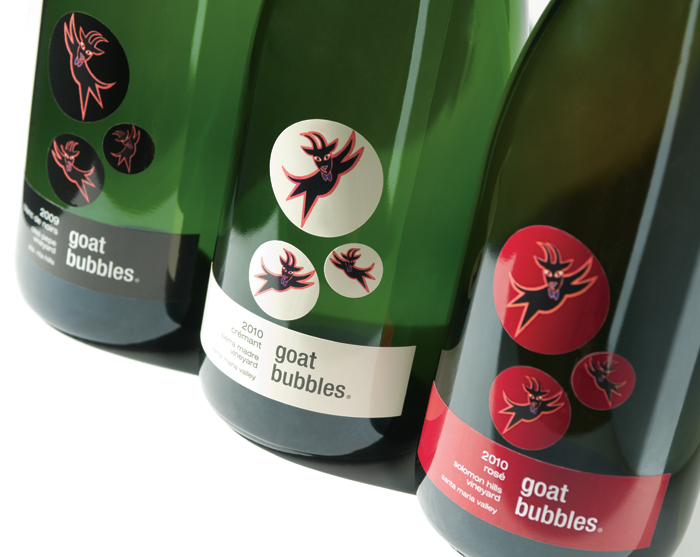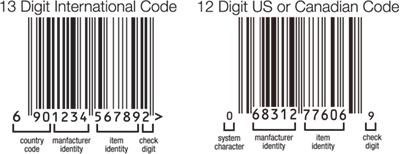Humor can be a great salesman (and the the packaging for the wine industry could certainly use some design levity).
Two pet pygmy goats, named Never and Epernay, loved to jump from heights. With their unrestrained spiral loops, flipper turns and straight-legged leaps they were a constant source of entertainment. When choosing a name for his new brand of Santa Barbara County wines, Norman Yost wanted to project fun, enjoyment, and happiness. Norm is a playful spirit so he opted to name it after his flying kids, Flying Goat Cellars.
When it came to his all natural sparkling wines, with a wry sense of humor Norm called them “Goat Bubbles.” He gave the packaging design and branding team at MOI (Mark Oliver, Inc.) poetic license to come up with innovative wine labels. With a name like that, the graphic design was pretty obvious. We put a goat illustration within its own bubble, each goat positioned a little differently in each bubble, all of them floating up from the bottom of their bottles. The creative result is playful and an unusual design solution as well.

The four-part label is unique from a wine label production standpoint, too. The printer had never created a multiple element label of this complexity and tests were conducted to assure the label film would adhere properly during production. Finally, each of the wines has a hand-dipped colored wax crown that matches the label color. The result? Adults love it. The kids, too.


